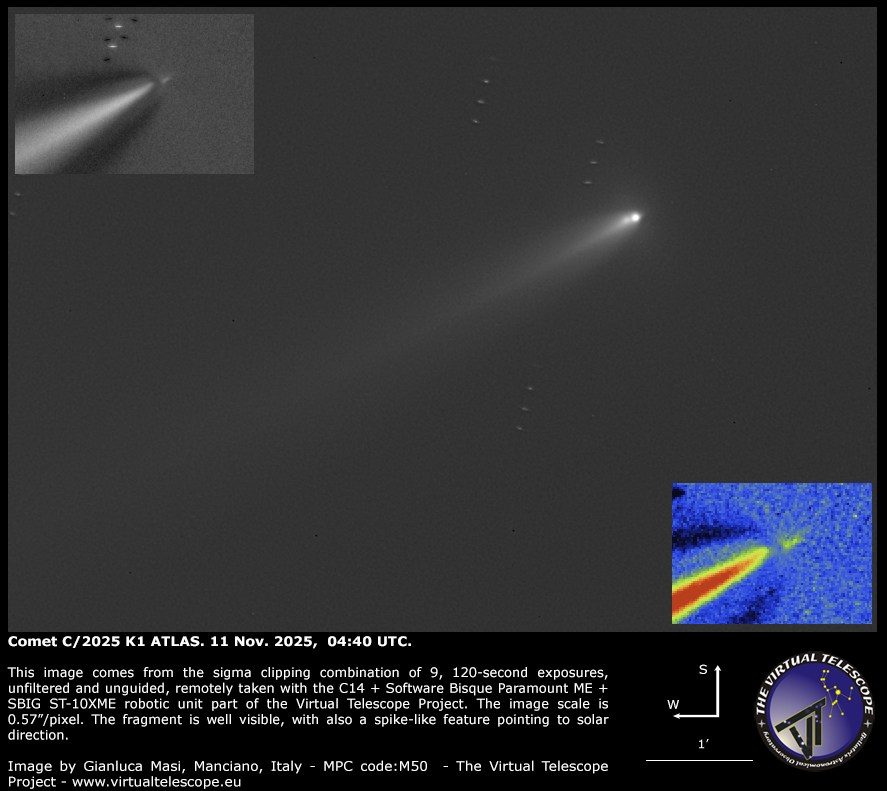We imaged comet C/2025 K1 ATLAS, detecting its “double” nucleus, after its fragmentation.

Comet C/2025 K1 ATLAS: the “double” nucleus is well visible, as well a spike-like feature pointing in solar (SE) direction.
The image above comes from the average of nine, 120-second unfiltered exposures, remotely taken with the Celestron C14+Paramount ME+SBIG ST-10XME robotic unit available as part of the Virtual Telescope Project in Manciano, Italy.
Carefully processing the available data, we could easily see the secondary nucleus (already visible in the raw images), which was reported about 24 hours earlier. Looking at the picture, it is also visible a spike-like feature, pointing in the direction of the Sun (NE).
The day before, as soon as the nucleus break-up was announced, we spotted it, as in the picture below
C/2025 K1, imaged on 10 Nov. 2025, soon after the fragmented nucleus was reported.
The image above comes from the sigma-clipping combination of 7, 120-second exposures, remotely taken with the ARTEC250+Paramount ME+C3Pro61000EC robotic unit available as part of the Virtual Telescope Project facility in Manciano, Italy. The original picture was 2X resampled, then processed to show the splitted nucleus. Note that in this image the filed is 180deg. rotated, compared to the previous picture.
Support The Virtual Telescope Project!
Support us! Please, donate and receive an EXCLUSIVE, hi-quality image of the record-setting 27 July 2018 total lunar eclipse above the Colosseum and many more pictures, specifically made for supporters like you!![]()

